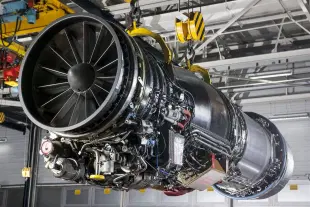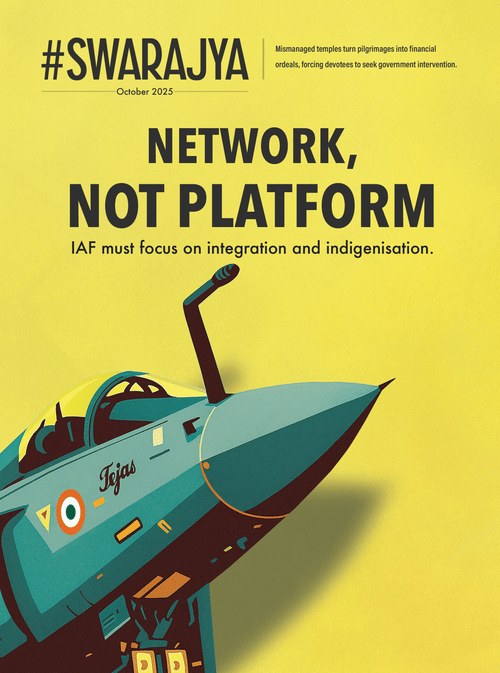News Brief
French Safran And DRDO To Finalise Deal Soon For AMCA Jet Engine, First Flight Test Expected In 2028
Nishtha Anushree
Sep 11, 2025, 12:49 PM | Updated 12:49 PM IST
Save & read from anywhere!
Bookmark stories for easy access on any device or the Swarajya app.


India is on the verge of finalising a major collaboration between French aerospace giant Safran and the Defence Research and Development Organisation's (DRDO) Gas Turbine Research Establishment (GTRE) to co-develop a high-thrust jet engine for the twin-engine Advanced Medium Combat Aircraft (AMCA).
This initiative follows recent confirmations from top officials, as reported by Hindustan Times, emphasising India's drive toward self-reliance in advanced defense technologies.
On 22 August, Defence Minister Rajnath Singh publicly confirmed that the AMCA's engine would be jointly developed with Safran, with the project spanning 10 years under the Horizon 2047 strategic partnership between India and France.
More recently, at the NDTV Defence Summit, Defence Secretary Rajesh Kumar Singh reiterated Safran's selection for this $7 billion endeavor, highlighting a 10 to 12-year timeline for development, with production slated to begin around 2036.
About the Agreement
Safran will provide 100 per cent technology transfer to DRDO, ensuring full intellectual property rights remain with India. This includes critical advancements like single-crystal turbine blades, which enhance efficiency, durability, and performance under extreme heat and stress—technologies that GTRE has foundational knowledge of but needs to scale for fighter jet applications.
The engines will start at 120 kN thrust, with scalability to 130-145 kN, featuring a turbine entry temperature of 2100K and a modular design for future upgrades. Plans call for developing nine prototypes over 12 years, with milestones including five prototypes ready by 2027, the first flight test in 2028, and certification by 2032.
The entire production will occur in India, granting unrestricted rights for modifications, maintenance, and even exports, without export restrictions and with royalties-based revenue sharing. This engine will not only equip the AMCA MkII, with deliveries expected from 2037 and the Indian Air Force aiming to induct 126 jets by the early 2040s, but also power the Indian Navy's Twin-Engine Deck-Based Fighter (TEDBF), set to debut in 2038.
The Stakes
The partnership aligns with Prime Minister Narendra Modi's emphasis on indigenous defense capabilities, positioning India among elite nations like the US, Russia, UK, and France in mastering jet engine technology, while reducing reliance on foreign suppliers prone to disruptions.
The proposal, backed by the Prime Minister’s Office as a “National Mission Mode Project,” has been cleared by DRDO and is awaiting approval from the Cabinet Committee on Security.
This move builds on France's reliable support, such as during India's 1998 nuclear tests, and contrasts with partial technology transfers from other partners like the US, where GE Aerospace offers only about 70 per cent for the F414 engine.
Private sector involvement is expected, with companies like Tata, L&T, and Adani Defence poised to contribute to AMCA production, further boosting civilian spin-offs from this apex technology.
Nishtha Anushree is Senior Sub-editor at Swarajya. She tweets at @nishthaanushree.





